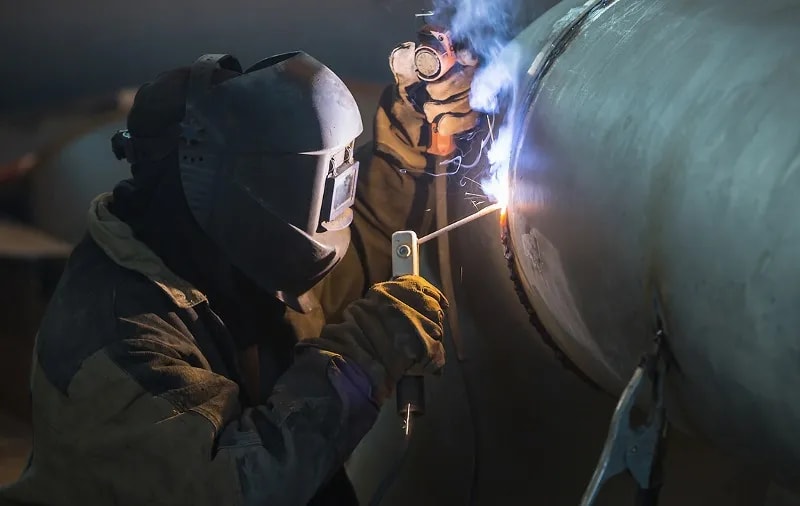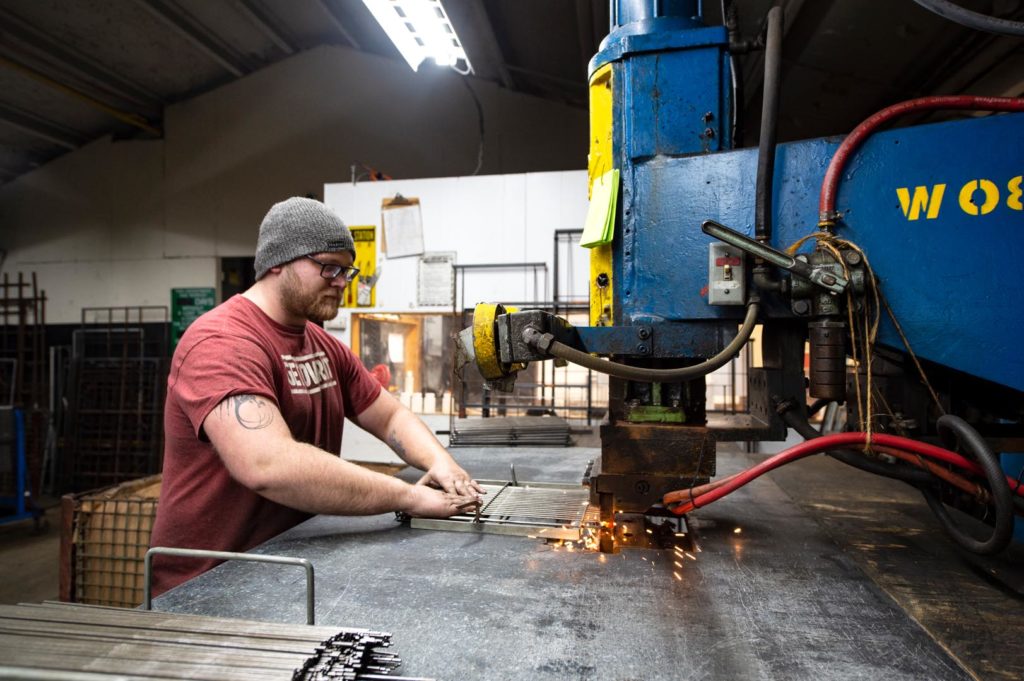A detailed look at welding penetration issues and Montana Mobile Welding and Repair Belgrade’s fixes
Everything about Welding: Trick Insights Into Techniques and Best Practices for Success
Welding incorporates a selection of strategies, each suited for particular products and applications. Comprehending these approaches, such as GMAW, SMAW, and TIG, is crucial for accomplishing perfect outcomes. The ideal tools and security practices can not be overlooked. As prep work and troubleshooting play important functions in the welding procedure, understanding these components can greatly enhance the top quality of the end product. What are the key factors that ensure an effective weld?
Understanding Various Welding Techniques
Welding methods encompass a variety of approaches, each suited to details applications and materials. Amongst one of the most typical strategies are Gas Metal Arc Welding (GMAW), Protected Metal Arc Welding (SMAW), and Tungsten Inert Gas Welding (TIG) GMAW, likewise known as MIG welding, is prominent for its speed and convenience, making it perfect for thin materials. SMAW, or stick welding, is favored for its simplicity and effectiveness in exterior environments, especially with thicker steels. TIG welding uses accuracy and control, making it appropriate for intricate work and non-ferrous steels (Montana Mobile Welding and Repair). Each strategy has its special advantages and considerations, permitting welders to select the most effective method based upon the task's requirements, product kind, and desired results. Understanding these strategies is necessary for effective welding
Vital Welding Equipment and Devices
While numerous welding strategies call for certain abilities, the right devices and devices are similarly crucial for accomplishing high quality results. Vital welding tools consists of welding machines, which differ depending upon the method-- such as MIG, TIG, or stick welding. Protective equipment, including aprons, helmets, and handwear covers, assurances safety and security and convenience throughout the process. Furthermore, clamps and components assist safeguard materials in location, making certain precision in welds. Consumables like welding rods, wire, and shielding gas are likewise crucial elements that influence the top quality of the weld. Furthermore, tools such as grinders and cutters assist in surface prep work and post-weld ending up, adding to a specialist end result. Purchasing top quality devices eventually enhances the efficiency and efficiency of welding tasks.
Safety Practices in Welding
Appropriate security practices are necessary in the welding industry to shield employees from prospective risks. Welders must put on appropriate individual protective tools (PPE), consisting of safety helmets with proper shading, handwear covers, and flame-resistant clothing. Adequate air flow is vital to minimize direct exposure to harmful fumes and gases generated throughout the welding procedure. In addition, employees must be learnt the appropriate handling of welding devices to prevent mishaps. Fire precaution, such as keeping combustible products far from the welding area and having fire extinguishers readily offered, are needed. Regular examinations of equipment and work areas can help determine potential dangers prior to they result in crashes. By adhering to these safety and security practices, welders can develop a safer working setting and reduce dangers related to their trade.
Readying Materials for Welding
Preparing products for welding is an important action that significantly affects the quality and stability of the last product (Montana Mobile Welding and Repair Belgrade Welding). Appropriate preparation involves cleansing the surface areas to get rid of impurities such as corrosion, dirt, and oil, which can compromise the weld. Methods such as grinding, fining sand, or utilizing solvents are frequently used to attain a clean surface. Furthermore, making sure that the materials mesh snugly is essential; gaps can cause weak welds. It's likewise vital to think about the placement and positioning of the parts, as this will affect the ease of welding and the last end result. Choosing the proper filler product and making certain compatibility with the base steels is vital for achieving solid, durable welds.
Tips for Getting High-Quality Welds
Achieving top quality welds requires focus to information and adherence to best practices throughout the welding process. Correct joint prep work is crucial, guaranteeing surface areas are complimentary and clean from impurities. Selecting the suitable filler material and welding technique based upon the base steels is essential for optimal bonding. Preserving constant traveling rate and angle while welding can advertise and prevent issues uniformity. In addition, managing heat input is crucial; too much heat can cause warping and damaged joints. Consistently checking the welds throughout the procedure enables for prompt modifications if required. Using ideal post-weld therapies, such as cleansing and stress and anxiety relief, can enhance the sturdiness and honesty of the weld, ultimately guaranteeing an effective end result.
Repairing Typical Welding Issues
Welding commonly presents challenges that can impact the top quality and honesty of the final product. Usual concerns such as porosity, inconsistent weld beads, and getting too hot can develop, each needing particular fixing techniques. Comprehending these issues is important for welders to boost their abilities and achieve excellent results.
Porosity Issues Described
Porosity can usually be ignored, it remains a vital concern in welding that can jeopardize the honesty of a finished product. Porosity describes the presence of small gas pockets within the weld bead, which can lead and weaken the joint see here now to early failure. This problem normally develops from contaminants, moisture, or incorrect shielding gas insurance coverage during the welding procedure. To mitigate porosity, welders ought to confirm that the base materials are completely dry and clean, make use of suitable securing gases, and keep consistent welding criteria. Regularly inspecting the equipment and setting can likewise assist determine prospective problems prior to they manifest in the weld. Attending to porosity efficiently is crucial for achieving solid, sturdy welds that satisfy top quality requirements.

Inconsistent Weld Beads
Inconsistent weld beads can significantly impact the quality and toughness of a finished product. Numerous variables add to this concern, consisting of incorrect travel rate, incorrect amperage setups, and irregular electrode angles. When the welder moves as well swiftly, a grain might show up narrow and lack infiltration, while relocating also gradually can cause excessive build-up. Furthermore, utilizing the wrong amperage can result in either damaging or extreme spatter, both of which compromise weld honesty. The welder's technique, such as inconsistent lantern movement, can also lead to uneven bead appearance. To reduce these problems, welders must concentrate on maintaining constant, controlled activities and making sure correct tools settings to accomplish uniformity in their welds. Consistency he said is crucial to achieving solid and trustworthy welds.
Getting Too Hot and Warping Issues
Excessive heat throughout the welding process can bring about considerable overheating and deforming issues, impacting the architectural stability of the workpiece. These issues commonly show up as distortion, which can endanger placement and fit-up, making more setting up testing. Elements adding to overheating include the selection of welding specifications, such as voltage and travel rate, along with the kind of product being bonded. To reduce these problems, welders ought to preserve constant traveling rate and appropriate heat input while keeping an eye on the work surface temperature level. Additionally, preheating or post-weld warm therapy can help minimize stress and anxieties caused by quick air conditioning - Fabrication. Routine inspection and adherence to ideal methods are essential in stopping overheating and making sure the durability and dependability of welded structures
Frequently Asked Inquiries
What Are the Job Opportunities in the Welding Sector?
The welding sector uses diverse profession opportunities, including positions as welders, engineers, instructors, and inspectors. Professionals can function in production, building, aerospace, and automobile industries, benefiting from solid demand and competitive wages in numerous functions.
Just How Can I Boost My Welding Speed Without Sacrificing Quality?
To boost welding rate without sacrificing high quality, one ought to exercise efficient methods, maintain devices, optimize settings, and boost hand-eye sychronisation. Regular training and seeking responses can likewise considerably add to achieving faster, top notch welds.
What Certifications Are Available for Welders?
Numerous certifications exist for welders, including those from the American Welding Society (AWS), the National Center for Building Education and Research (NCCER), and numerous industry-specific companies. These qualifications boost employability and show ability effectiveness.
Exactly How Does Welding Affect the Qualities of Metals?
Welding influences the residential or commercial properties of metals by altering their microstructure, which can result in changes in ductility, strength, and solidity. Heat input and cooling prices throughout the procedure greatly impact these product features.
Can I Weld Dissimilar Metals With Each Other?
